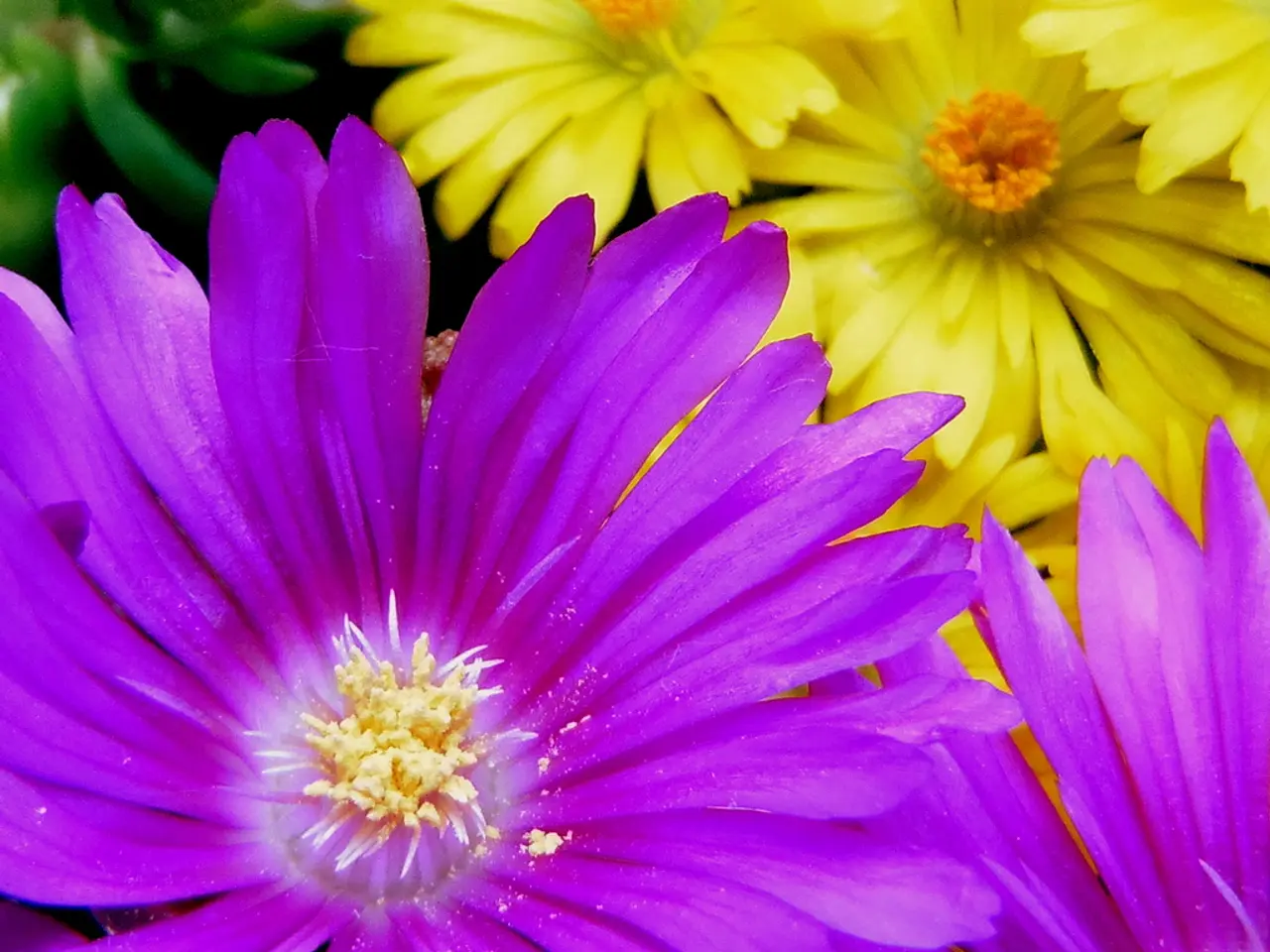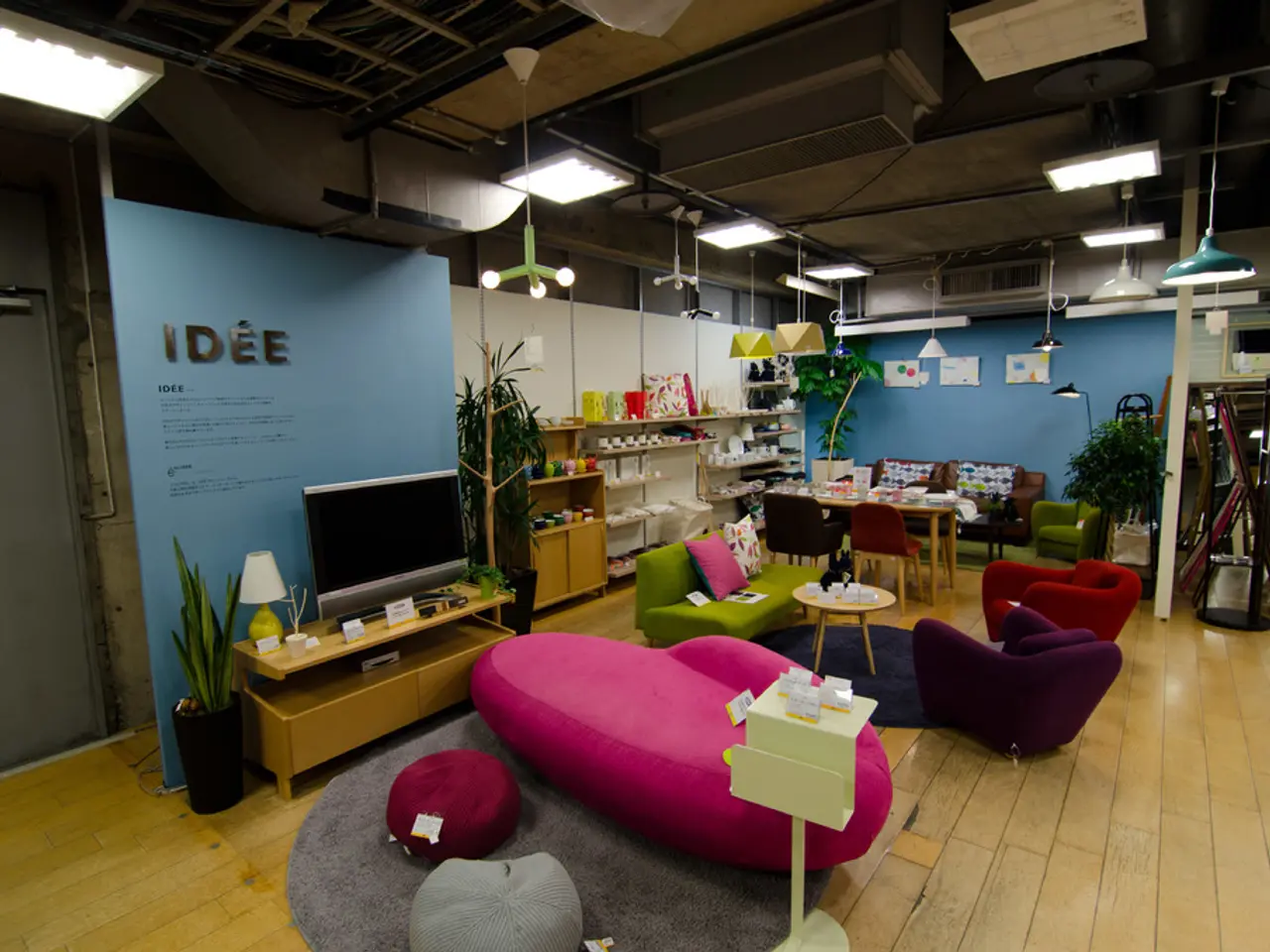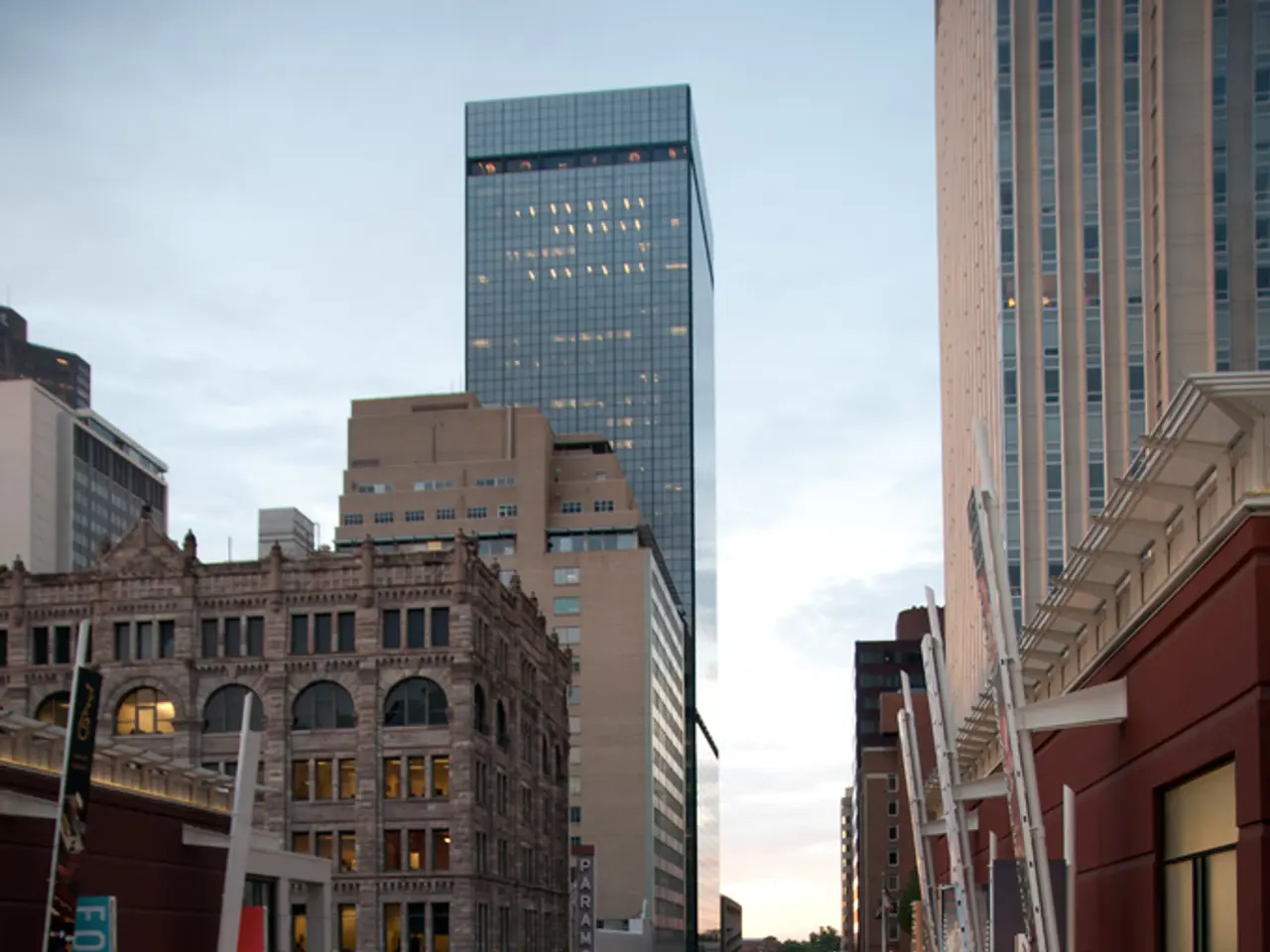Discover Tranquility in Your Flower Bed with 11 Stunning Annual Blue Blooms
In the quest for adding a touch of elegance and vibrant colour to your garden, blue flowers are a must-have. Here's a roundup of some beautiful annual and perennial blue blooms that can thrive in varying light and soil conditions.
Annuals
Baby Blue Eyes (Nemophila menziesii)
This low-growing annual boasts delicate blue flowers that flourish in full sun and well-draining sandy or loamy soil. Preferring consistently moist but not waterlogged soil, Baby Blue Eyes grows well in USDA zones 7–10.
Morning Glory
This vine, with its trumpet-shaped blue flowers and heart-shaped leaves, requires full sun and well-drained soil. Sow seeds once the ground is warm, and enjoy blooms from summer to fall. Please note that Morning Glory seeds are toxic if ingested.
Moonflower
Typically grown as an annual outside tropical zones, moonflowers produce large white trumpet-shaped flowers that bloom at night. They prefer full sun and moist soil but are not fussy about soil quality. Plant after the last frost near a trellis for vines up to 15 ft tall.
Perennials
Delphinium
Delphiniums are known for their dramatic tall spikes of blue flowers. They thrive in full sun with rich, well-drained soil and require regular watering and occasional staking to support growth.
Hydrangea (color-changing varieties)
Hydrangeas can turn vivid blue in acidic, well-drained soil. They prefer morning sun and afternoon shade, making them suitable for zones 3-9, and require regular watering to maintain blooms.
Virginia Bluebell (Mertensia virginica)
This shade-tolerant perennial features blue bell-shaped flowers appearing in spring, thriving in consistently moist but well-drained soil. Suited to USDA zones 3-8 and part to full shade, it goes dormant mid-May.
Growing Conditions Summary
| Flower | Type | Sunlight | Soil | Watering | USDA Zones | Additional Notes | |------------------|------------|----------------------|-------------------------|---------------------|--------------|--------------------------------------------------| | Baby Blue Eyes | Annual | Full sun | Well-drained sandy/loam | Keep moist, not wet | 7–10 | Drought-resistant | | Morning Glory | Annual | Full sun | Well-drained | Moderate | Varies | Seeds toxic if ingested | | Moonflower | Annual* | Full sun | Moist, not fussy | Moderate | 10–11 (perennial), others annual | Night bloomer, vines up to 15 ft | | Delphinium | Perennial | Full sun | Rich, well-drained | Regular | Varies | Needs staking | | Hydrangea | Perennial | Morning sun, afternoon shade | Acidic, well-drained | Regular | 3–9 | Blue blooms depend on soil acidity | | Virginia Bluebell| Perennial | Part to full shade | Moist, well-drained | Average | 3–8 | Spring bloomer, goes dormant mid-May |
*Moonflower is perennial only in subtropical zones 10 and 11, grown as annual elsewhere.
Additional Blue Flowers
- Larkspur prefers moist, fertile, well-drained soil in full sun, with some afternoon shade in hot summers. Deadheading encourages a second, late-season flush of blooms.
- Larkspur leaves are palmately divided or lobed, and may be fine and feathery depending on the species or cultivar.
- Floss flower forms six-inch to foot-tall mounds of ovate to deltoid foliage and blooms all season long.
- Amazon blue has blue, two-petaled flowers that resemble snapdragons, blooming midsummer into fall. It prefers full sun to part shade and moist, well-drained soil.
- Floss flower appreciates rich, moist soil with good drainage in full sun, and though somewhat drought tolerant, it prefers richer soil.
- Larkspur produces spikes of white to blue flowers from midspring to midsummer, each with a single spur on the back.
These blue flowers can add striking color and elegance to gardens with varying light and soil conditions, from sun-loving annuals to shade-tolerant perennials. Adjust watering and soil type according to each species’ preferences to maximize bloom and growth.
Organic gardening practices can improve soil health and provide a haven for pollinators while cultivating these blue flowers. Herbs such as borage, chicory, and clover attract beneficial insects, creating a synergistic environment for the garden.
Decorate your home with arrangements featuring these blue blooms, incorporating them into fashion-and-beauty products like hair accessories or home-and-garden accents such as vases or table centerpieces.
The lifestyle choices that prioritize eco-friendly practices can extend to the garden, where growing organic blue flowers contributes to both the environment and your personal space.
By nurturing a blue flower garden with proper sunlight, soil, and watering conditions based on factors like USDA zones, you can create a beautiful and harmonious sanctuary for pollinators and yourself.
Incorporating annuals like Baby Blue Eyes, Morning Glory, or Moonflower, along with perennials such as Delphinium, Hydrangea, and Virginia Bluebell, will ensure a vibrant display of blue flowers year after year.
Sharing the beauty and knowledge of blue flower gardening with friends and family can inspire others to cultivate these stunning plants in their own home-and-garden spaces.




